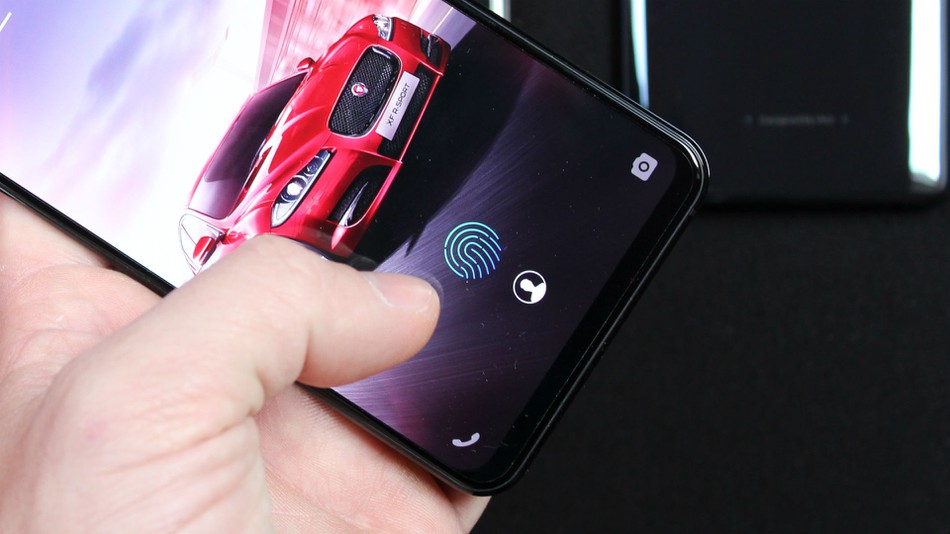A Change of Heart: OnePlus 6T’s In-Display Fingerprint Scanner
Give your gadgets a new life.

At Gadget Salvation, our mission is to contribute to the electronics reselling market as much as possible so that we extend the life of our gadgets and diminish waste. Our process is simple and seamless.
Answer a few questions and get an estimate.
Ship your gadget for free.
Get paid within two business days of our receiving your gadgets.

OnePlus has finally confirmed that their next smartphone will have an in-display fingerprint sensor. Their upcoming unit, the OnePlus 6T, is set to be released this coming November. With the growing demand for phones with fingerprint-scanning features, what makes the OnePlus 6T’s fingerprint scanner different among the rest?
Screen Unlock
As Vivo is credited with introducing in-display sensors to the market, OnePlus brands its fingerprint-on-display (FOD) feature as a screen unlocking mechanism. It was originally meant to be a feature on the 5T, and the company affirms that the technology is now “mature enough” for the 6T to wield it.
In addition, OnePlus has confirmed that rear-facing index finger scanners will no longer be available on their smartphones in the future. The new Screen Unlock feature will be partnered with the 6T’s Face Unlock feature as another security option depending on the user’s preference.
The OLED smartphone is also 0.45mm thicker than the OnePlus 6 model. This is to make room for all the parts necessary for their display-integrated sensors.
The Problem with Rear-Facing Fingerprint Sensors
Unlike other companies that manufacture and sell cellphones, OnePlus decided to incorporate their sensor at the bottom center of the screen to eliminate the hassle that rear-facing sensors present.
These rear sensors are designed to make way for ultra-narrow bezels—the borders around the display—for a more elegant design. They also remove the thumb-twisting user experience. And since the index finger rests naturally at the back of the smartphone, many manufacturers have opted to jump on the rear sensor bandwagon.
Rear-facing sensors, however, inconvenience users whose preference is to use their phone without actually holding it and unlock the device without having to pick it up.
Meanwhile, some users may simply have smaller hands and would rather use smartphones with front-facing fingerprint scanners.
Usability and Sleekness
For the in-display fingerprint authentication to work, the resting finger should be in contact with the bottom center section of the screen. This area of the display then lights up, and your fingerprint is scanned from underneath the screen. OLED is the priority component of a smartphone with an in-display sensor, as LCDs are considered to be too thick.
Since Apple released their fabled iPhone X and Essential released the first Android counterpart, traditional bezels have been rendered primitive in phone design. But none of these bezel-less smartphones—with the iPhone X’s occasionally inaccurate Face ID and the Android models’ rear-facing fingerprint sensors—fully deliver the seamless usability that a phone with an in-display fingerprint sensor would for many people.
As OnePlus lets go of rear scanners and joins Vivo in utilizing an in-screen fingerprint authentication system, the tech company merges sleekness with usability.
Of course, not everyone is convinced that the feature is going to be perfect. Many critics explain that in-screen sensors are a little slower compared to the rear-facing sensors seen in other models—including the OnePlus 6T’s own predecessor, the OnePlus 6. This means future users of the 6T may end up opting for the Face Unlock feature instead.
Nevertheless, it’s nice to even have that choice between two game-changing technologies. After all, who wants to go back to using a PIN code?

Give your gadgets a new life
At Gadget Salvation, our mission is to contribute to the electronics reselling market as much as possible so that we extend the life of our gadgets and diminish waste. Our process is simple and seamless.
Answer a few questions and get an estimate.
Ship your gadget for free.
Get paid within two business days of our receiving your gadget.


